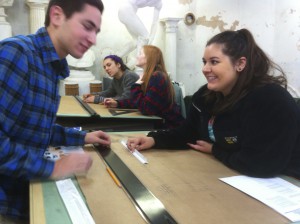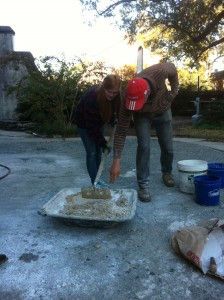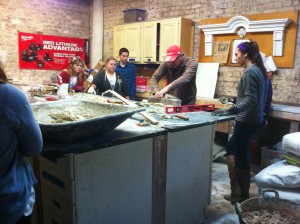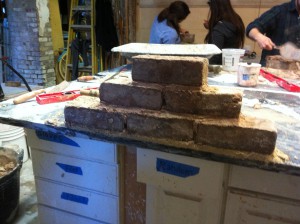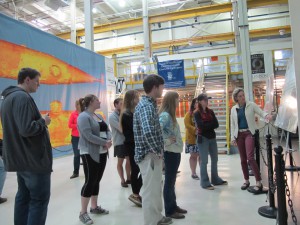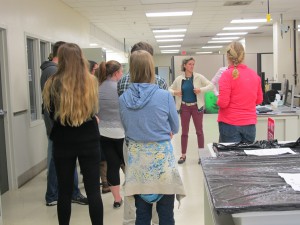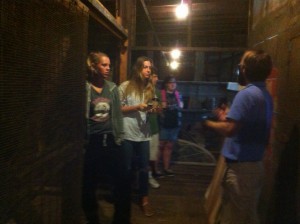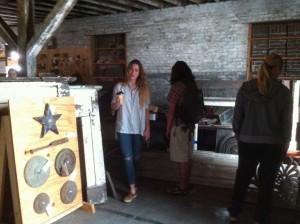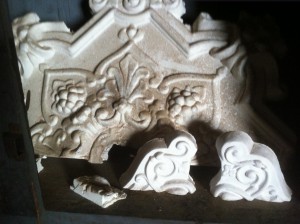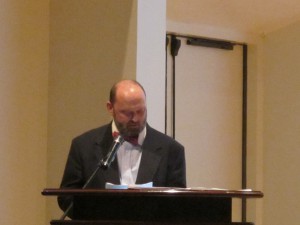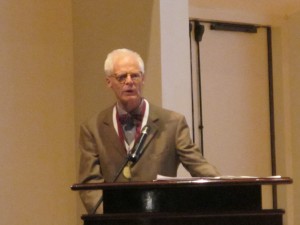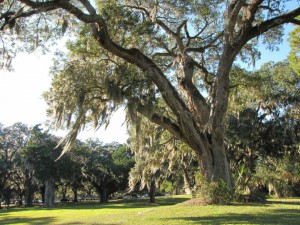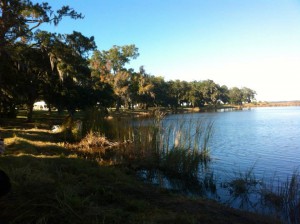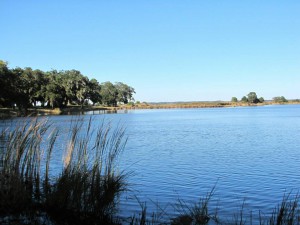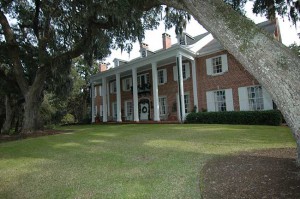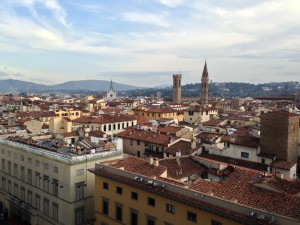This past weekend, 12 students were selected to participate in an all day bricklaying workshop at the American College of the Building Arts, as part of the new DAPS program. Prof. Gayle Goudy from the Art History Department and Prof. Muldrow are spearheading the Design + Arts + Preservation in the Schools (DAPS) program, designed to introduce middle and high school students to preservation and the arts.
On November 8, Muldrow, Goudy, and Prof. Christina Butler joined the students for an intensive workshop led by Simeon Warren, trowel trades professor, at the College of Building Arts. The students participated in geometry, estimating, and drafting exercises in the morning. After lunch, they had the chance to learn about historic lime mortar and mix a few batches. The students then broke into groups of two and put their training to the test, building small sections of a brick wall using historic bricks and mortar.
The goal of the day’s exercises is part of the a faculty effort to create K-12 curriculum for the DAPS program combining history, algebra, fractions, and chemistry with architecture and the arts through fun, hands on exercises.
Thanks to Simeon Warren, Dr. Goudy, and Ralph Muldrow for a fun and educational day!
Here is a brief description of the Design+Art+ Preservation in the Schools (DAPS) initiative, taken from the DAPS blog page:
The DAPs initiative seeks to integrate design, art, and preservation into Charleston County Schools curriculum using the often overlooked tools of creative design including visual, tactile, and experiential learning. We strive for ways to to aide teachers in achieving their learning outcomes and use the city of Charleston with its extensive stock of historic architecture as a living laboratory. A special emphasis will be to find new ways forward in aiding low performing schools in their quest for new ways forward in education.
This initiative is composed of members from throughout the community including the College of Charleston, Clemson Architectural Center, Clemson Lasch Lab, American College of Building Arts, Institute of Classical Architecture and Art, Preservation Society of Charleston, Yo Art Project, Historic Charleston Foundation, Gibbes Museum of Art, and local architectures and teachers.
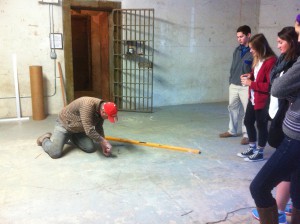
Prof. Warren demonstrates geometric exercises with a compass on the floor of a jail cell in the ACBA’s campus.
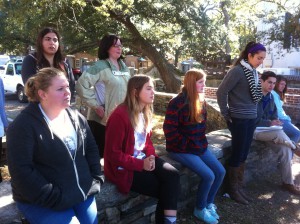
The students learn about laying brick and the importance of proper foundations.
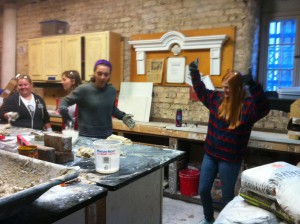
Mixing historic lime mortar and laying brick!
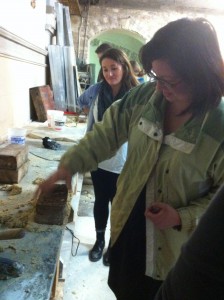
Dr. Goudy tries her hand at masonry.
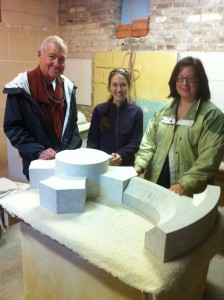
Prof. Goudy and Prof. Butler admire upper class stone carving student work at ACBA.
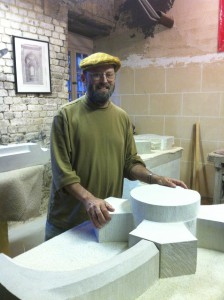
Prof. Muldrow approves of the work.
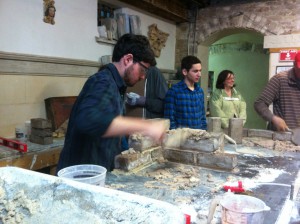
Preservation student Zach Liollio builds a wall; completed sections stand waiting for Prof. Warren to check them for level and plumb.


